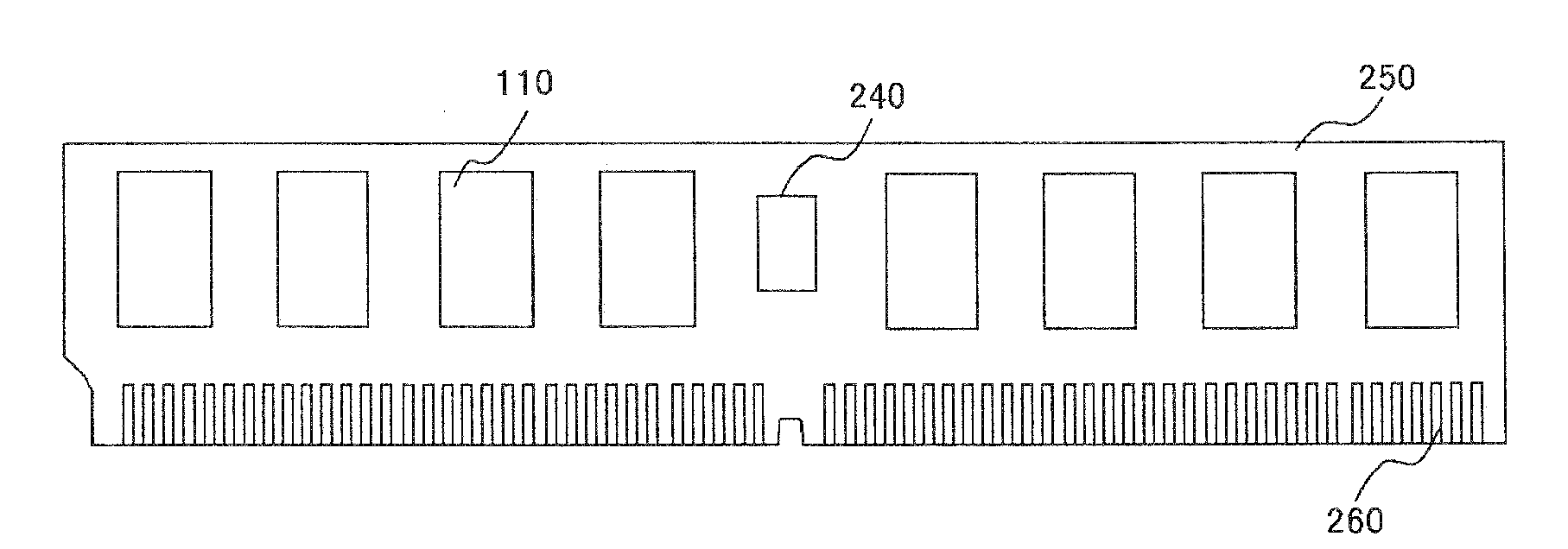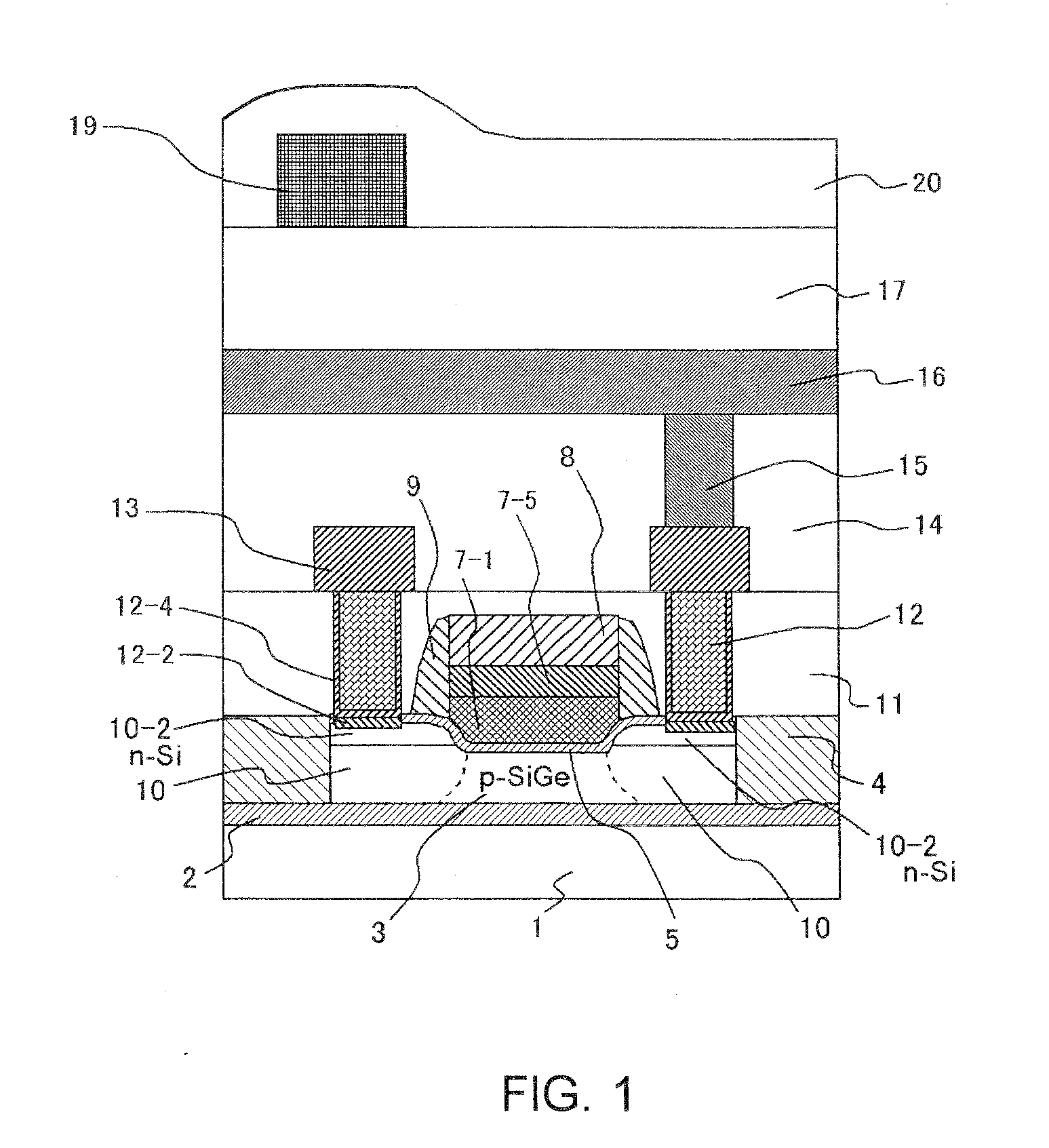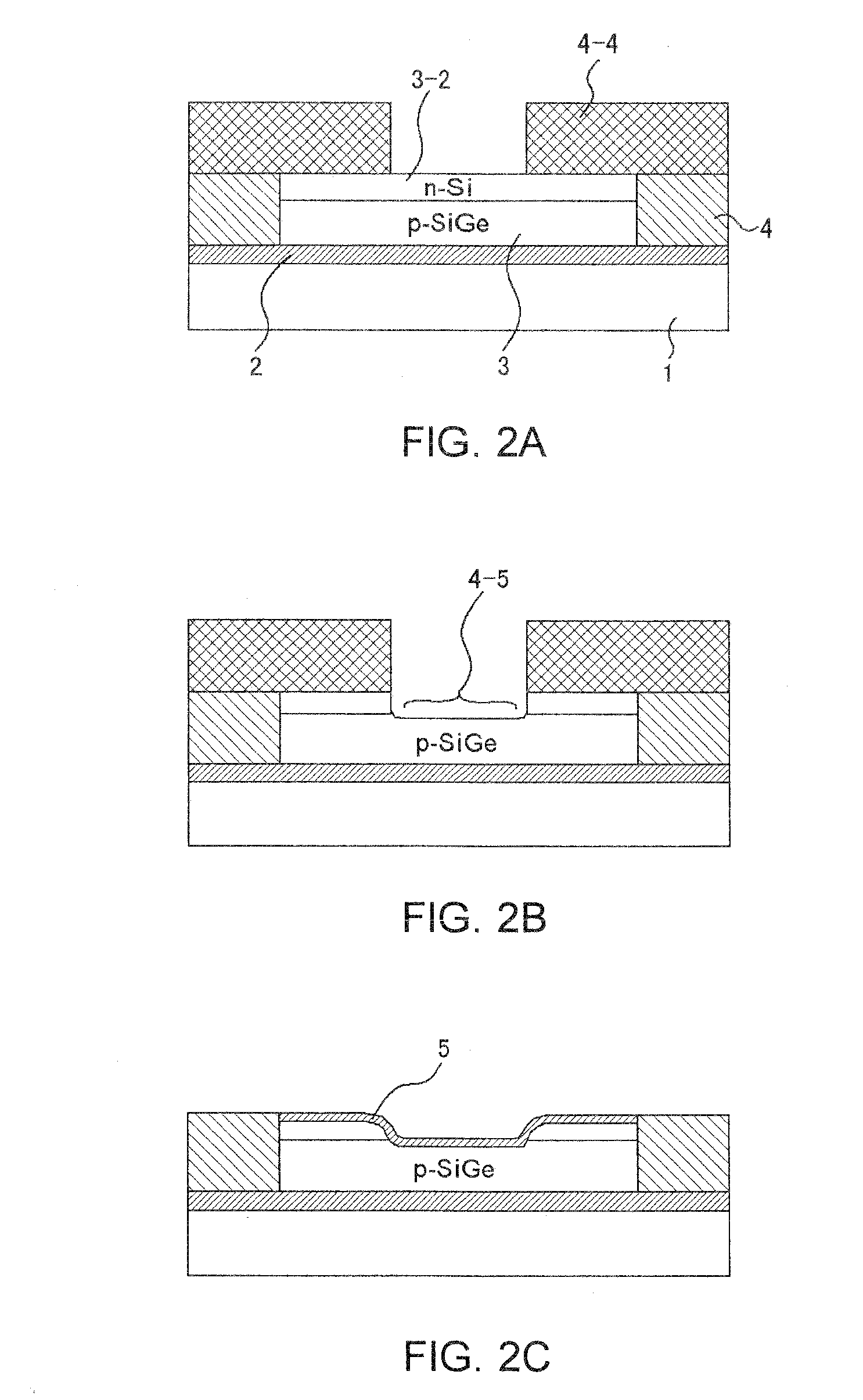Semiconductor device including capacitorless ram
- Summary
- Abstract
- Description
- Claims
- Application Information
AI Technical Summary
Benefits of technology
Problems solved by technology
Method used
Image
Examples
first embodiment
[0043]FIG. 1 illustrates a structure of the main part of an n-type MOS floating body cell (FBC) surrounded by an insulating film according to a first embodiment of the present invention. The main part includes, on semiconductor substrate 1, buried insulating film 2, body region 3, element isolation insulating film 4, gate insulating film 5, gate electrode 7 (gate polycrystalline silicon 7-1, gate metal layer 7-5), cap insulating film 8, sidewall spacer 9, source and drain region 10, insulating film (1) 11, contact plug 12, line (M1) 13, insulating film (2) 14, via plug (1) 15, bit line 16, insulating film (2) 17, line (M3) 19 and protective insulating film 20. Here, body region 3 includes p-type SiGe being a first semiconductor and has a smaller band gap than n-type Si being a second semiconductor constituting source and drain region 10.
[0044]Body region 3 is isolated from semiconductor substrate 1 by use of buried insulating film 2, and also electrically isolated from neighboring e...
second embodiment
[0054]A variation (second embodiment) is illustrated in FIGS. 3A to 3E.
[0055]An SOI substrate having buried insulating film 2 formed on substrate 1 is used. P-type SiGe is used for a semiconductor layer (body region 3) on buried insulating film 2. Element isolation insulating film 4, gate insulating film 5, polycrystalline silicon 7-1, metal layer 7-5 and cap insulating film 8 are sequentially formed and after processing the materials, gate electrode 7 is formed.
[0056]Here, a silicon oxide film or silicon oxynitride film containing nitrogen may be used for gate insulating film 5. Silicon oxynitride film has excellent resistance against exudation of dopant contained in polycrystalline silicon, so that it is preferable to use silicon oxynitride film.
[0057]Here, metal silicide such as silicides of refractory metal (e.g., tungsten silicide, titanium silicide or cobalt silicide) may also be used for metal layer 7-5. Alternatively, when metal layer 7-5 is constructed as a multilayer film ...
third embodiment
[0060]Another variation (third embodiment) will be described. FIG. 4A illustrates a cross-sectional structure of a transistor of a floating body structure having polycrystalline silicon 6-1 formed therein. This polycrystalline silicon 6-1 is a dummy gate, and semiconductor layer 3-1 is composed of p-type Si, but in other aspects, the same reference numerals are applied to parts corresponding to those of the above described embodiment. Subsequently, smoothed insulating film 11 is formed (FIG. 4B), and polycrystalline silicon 6-1 being a dummy gate is etched and removed.
[0061]Subsequently, p-type Si semiconductor layer (3-1) is doped with Ge via part (6-2) obtained by removing the dummy gate, whereby Ge-doped p-type Si region (3-5) is formed (FIG. 4C). In this doping, ion implantation or plasma doping technique may be used. The damaged oxide film is removed, the surface of the substrate is cleaned and thereafter gate insulating film 5 is formed. Then, a gate electrode material is buri...
PUM
 Login to View More
Login to View More Abstract
Description
Claims
Application Information
 Login to View More
Login to View More - R&D
- Intellectual Property
- Life Sciences
- Materials
- Tech Scout
- Unparalleled Data Quality
- Higher Quality Content
- 60% Fewer Hallucinations
Browse by: Latest US Patents, China's latest patents, Technical Efficacy Thesaurus, Application Domain, Technology Topic, Popular Technical Reports.
© 2025 PatSnap. All rights reserved.Legal|Privacy policy|Modern Slavery Act Transparency Statement|Sitemap|About US| Contact US: help@patsnap.com



